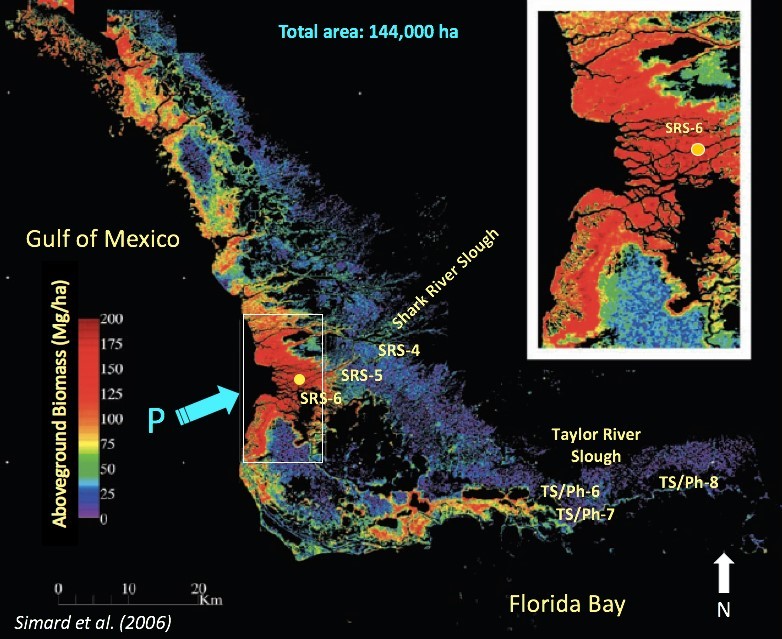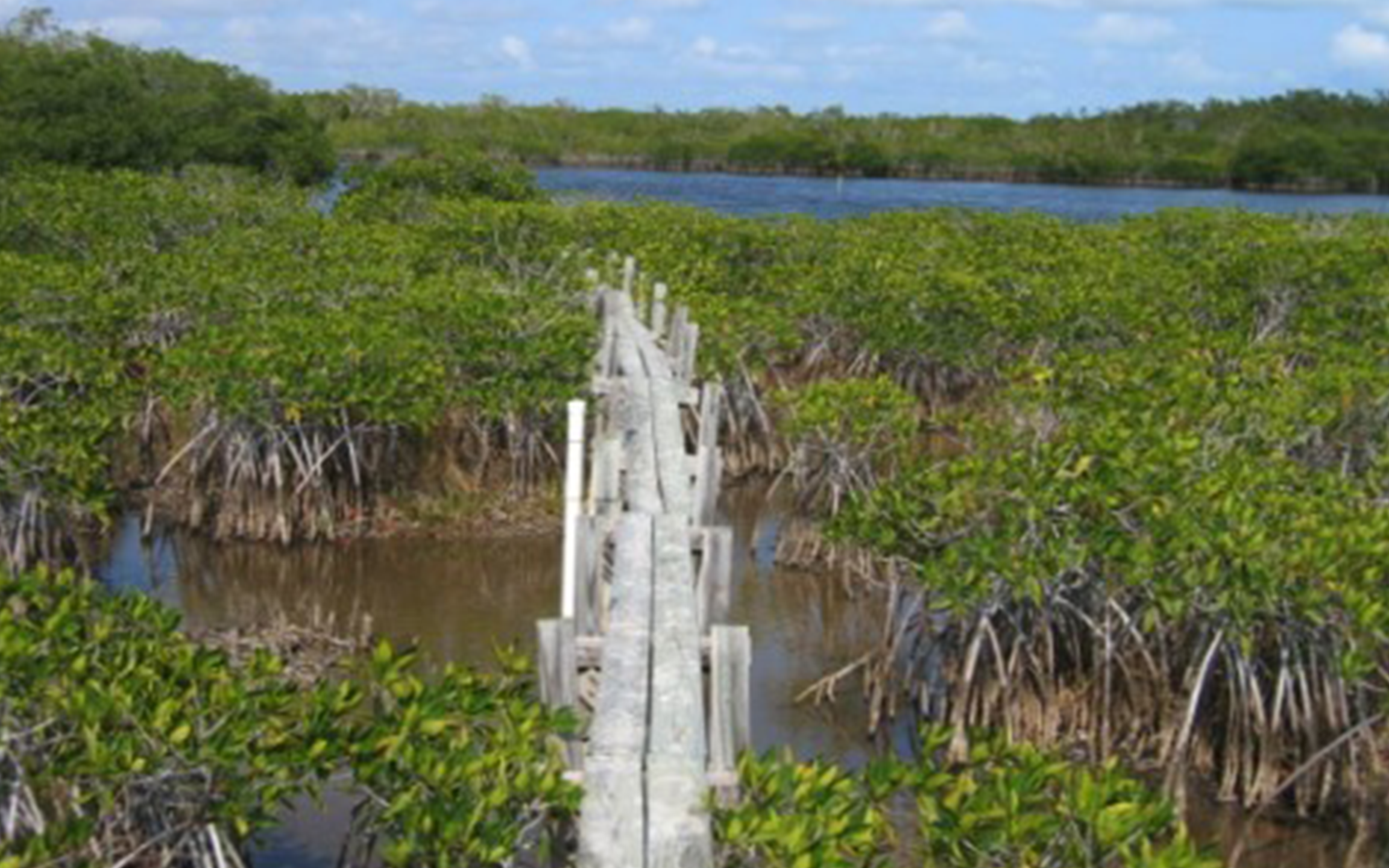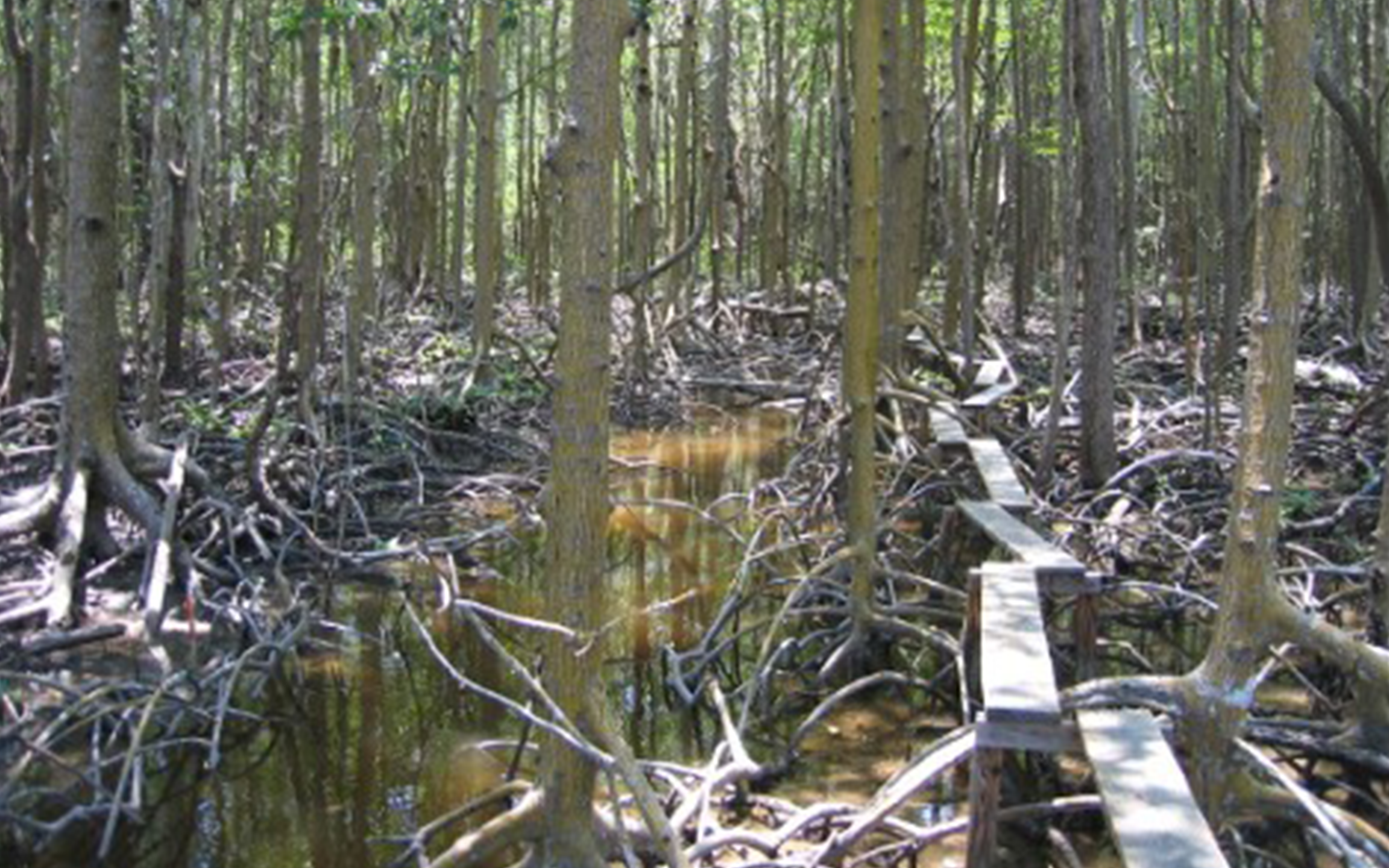- Title: Allocation of Biomass and Net Primary Productivity of Mangrove Forests in the Florida Coastal Everglades
- Principal Investigators: Edward Castaneda
- Funding Source: National Science Foundation
- Timeline: ongoing
Primary productivity represents the major input of carbon and biological energy into world’s ecosystems and can be considered as an integrative measure of ecosystem functioning. Mangrove forests dominate tropical and subtropical coastlines and are among the most productive marine ecosystems in the world, ranking second in terms of net primary productivity (NPP) only to coral reefs. The productivity of mangroves represents the outcome and interactions of several factors that operate at distinct global, regional, and local scales. Climate and the relative role of regional geophysical processes (river input, tides, and waves) within a coastal landform are the dominant forcing functions that control the basic patterns of mangrove forest structure and function.

Figure 1. Distribution of mangrove aboveground biomass in the Everglades National Park (ENP), south Florida (Simard et al. 2006). The insert shows the location of Shark River estuary with the highest biomass distribution in near-coast mangroves.
At the local scale, variation in topography and hydrology within a coastal landform influence the distribution of soil resources and abiotic regulators, and along with hydroperiod, produce gradients resulting in the development of distinct mangrove ecotypes such as riverine, fringe, basin, scrub, and overwash forests. The magnitude and interaction of these environmental gradients including regulators (i.e., soil salinity, sulfide), resources (e.g., light, nutrients), and hydroperiod (e.g., frequency, duration, and depth of flooding) define a constraint envelope that determines mangrove productivity within a coastal setting.
In the Florida Coastal Everglades (FCE), vegetation patterns of mangroves result from the interaction of environmental gradients and natural disturbances (i.e., hurricanes), creating an array of distinct riverine and scrub mangroves across the coastal landscape. We are investigating how long-term (2000-present) landscape patterns of biomass and total net primary productivity (NPPT), including allocation in above- and below-ground mangrove components, vary inter-annually across gradients in soil properties and hydroperiod in two distinct FCE basins: Shark River Estuary (dominated by riverine mangroves) and Taylor River Slough (dominated by scrub forests).


We propose that the allocation of belowground biomass and productivity (NPPB) relative to aboveground allocation is greater in regions with P limitation and permanent flooding.
The project's goal is to understand how pulses of fresh and marine water and their associated resources influence mangrove structural and functional attributes and trajectories of ecosystem development in response to accelerated sea-level rise and hurricane disturbances.
For detailed information about this project, please visit the project's lab webpage.
Team
Principal Investigator
Edward Castaneda
Research Assistant Professor
305-348-7479
ecastane@fiu.edu
VH 332
Project Collaborators
- Victor H. Rivera-Monroy
- Robert Twilley
- David Lagomasino
